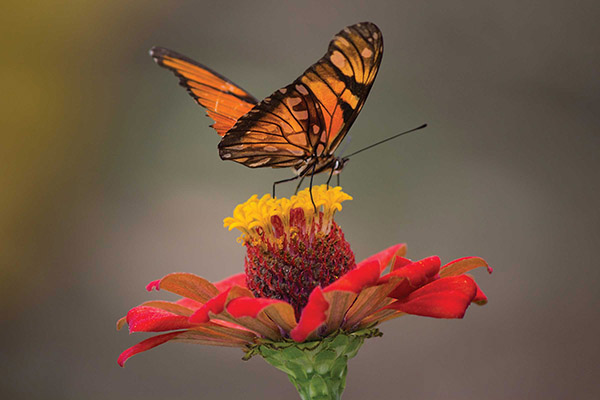April 2018, Vol.245, No.4
Features
Some Extra-Clean Breaks with Standard Practices
Spotlight on Utilities
By Michael Reed, Managing Editor
In recent weeks, some innovations in the area of fortifying the environment have been gaining attention and should make those in the industry, particularly those involved with gas distribution, feel good about what they do for a living.
First off, TECO Peoples Gas in Florida is making a move allowing the company to use gas from organic sources, such as gases generated by landfills or water treatment plants, to create renewable natural gas (RNG), which will soon be pumped into the company’s distribution pipelines.
"We are excited to be the first utility in Florida – and among the first in the country – to offer this innovative new service," said T.J. Szelistowski, president of Peoples Gas. "This is a win for the environment, a win for our customers, and a win for the communities we serve."
RNG is practical because it can fuel anything that runs on natural gas, and it’s also produced, transported and used in accordance with all the same rules as fossil natural gas, according to the EPA.
Natural gas, of course, generally comes from beneath the soil, through the traditional mining of fossil fuels. In the case of Peoples’ project, special equipment will clean and alter the refuse to a useable form. Peoples, which will be the first utility in Florida to offer this type of service, hopes to launch the program for some customers this year.
The Florida Public Service Commission unanimously approved the new utility service in December. RNG is sustainable and renewable, and it reduces the amount of methane emissions released in the air, while adding to fuel diversity. The program also creates a beneficial use for waste product that previously had been destroyed. As part of the program, communities may be eligible to receive economic benefits from environmental credits.
Peoples Gas System, Florida’s largest natural gas distribution utility, serves about 375,000 customers across the state.
The Gas Is Always Greener
Separately, a couple of efforts are planned to restore natural gas pipeline rights-of-way by planting wildflowers and grasses that will attract pollinators such as bees and butterflies.
In Southern Virginia and Eastern North Carolina, Dominion Energy, Duke Energy, Piedmont Natural Gas and Southern Company Gas announced they will sow seeds along a 750-acre area that stretches across 50-miles of the proposed 600-mile Atlantic Coast Pipeline.
"This program is going to help address one of the greatest environmental challenges of our time," Dominion spokesman Aaron Ruby, told AGA publication American Gas. "We depend on pollinators to help produce a lot of the food we eat."
Dozens of native seeds have been developed for the program, including those for grasses such as Little Bluestem and wildflowers like Black-Eyed Susan. The program is voluntary and will be implemented with the approval of participating landowners.
"Not only will it be beneficial to the pollinators, but it’s also going to create new habitats for other wildlife like quail, turkey and songbirds," said Ward Burton, president of the Burton Wildlife Foundation, which the Atlantic Coast Pipeline route crosses at two locations in Virginia. "I see this as a really creative way to not just restore the right-of-way, but actually enhance its environmental value."
A similar "pollinator pathway" is being planned by Canadian pipeline company Enbridge in conjunction with Houston-based King Ranch, Inc. The two will jointly donated $100,000 to the Caesar Kleberg Wildlife Research Institute to plant native grasses and wildflowers along a 42-mile segment of the Valley Crossing Pipeline’s route. That portion of the route will be one of the longest continuous pollinator pathways in the United States.
The pipeline, which will move natural gas from the Eagle Ford Shale to customers in Mexico, will serve as a migratory area for native Monarch butterflies. Construction of the 176-mile Valley Crossing Pipeline is about three-quarters completed.
In a similar effort, National Grid granted access to 5 acres of its property in Queensbury, N.Y. to the New York State Department of Environmental Conservation (NYSDEC) to help manage endangered butterflies in the area.
Karner blue butterflies are limited on where they can survive because of their limited diet, feeding only on the leaves while adults feed on the nectar of flowering plants of the low-growing wild blue lupine that favors open areas such as utility corridors.
The property will provide the butterflies with a habitat for breeding, feeding and eventual range expansion. This conservation easement is part of National Grid’s 50-year habitat conservation plan, approved in 2012 by the U.S. Fish and Wildlife Service. It was the first such plan offered by a utility in the Northeast.
"Restoring habitat for the Karner blue and frosted elfin butterflies is a priority for the recovery of these species in New York State," said NYSDEC Commissioner Joe Martens. "The protection of this five-acre preserve is an important step in halting the decline of these species and giving them a chance to thrive in an area safe from disturbance." P&GJ
"Spotlight on Utilities" highlights some of the innovations and achievements of those in the business of providing natural gas to homes and businesses. If you have a suggestion for inclusion in the column, email mreed@gulfpub.com






Comments